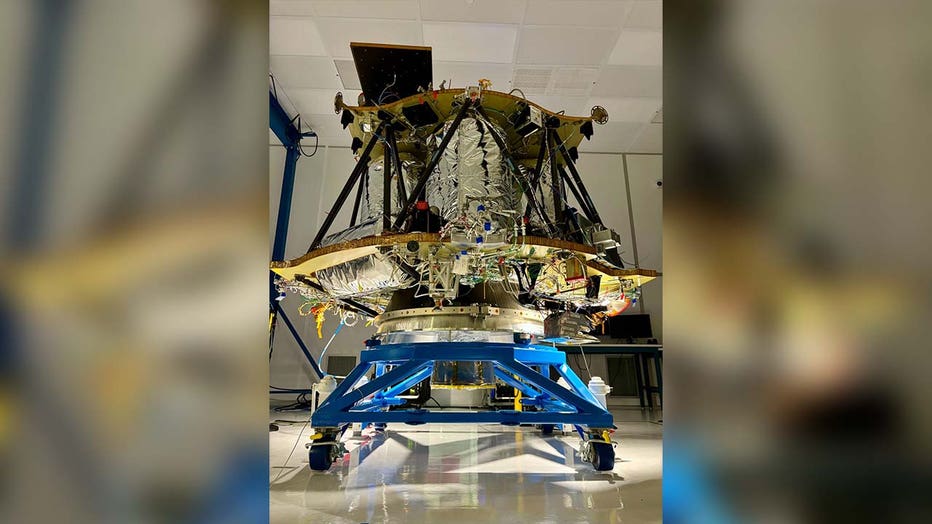Lunar Lander in Cedar Park almost ready for the moon
CEDAR PARK, Texas - In a clean room at Firefly Aerospace, the assembly of the Blue Ghost Lunar lander is coming to an end.
"It's a super exciting time here in Cedar Park right now," said Ray Allensworth, Spacecraft Program Director at Firefly.
The assembly team has been busy. All that’s left to do is bolt on the landing legs, install solar panels, and wrap it with thermal blanket.

"You can kind of feel the excitement creep up day by day at this point with doing all the testing and seeing it really come together in its final stages," said Allensworth.
Blue ghost was built as part of NASA’s plan to send humans back to the moon. The job for Firefly is to collect new information from the lunar surface. A payload, of 10 specialized instruments, was loaded on-board a few days ago.
"I'd say the payloads were a huge moment of excitement. Getting all the payloads integrated was not just for us, but huge for our NASA customers," said Allensworth.
Before blasting off to the moon, the lunar lander will be trucked to the Jet Propulsion Laboratory in California. It will go through a round of pre-flight tests next month. The launch window opens between November and December.
Sending Blue Ghost to the moon is just the beginning. The assembly and production team here in Cedar Park is already working on the next mission to the moon in 2025.
And just a few weeks ago, NASA called asking Firefly to go to Mars. Firefly is being asked to modify its Elytra spacecraft, which is set to go into earth orbit for the first time this fall for the NRO. Elytra will also be attached to the second Blue Ghost.
"Going to Mars is kind of everyone's next goal. So getting that call that we're part of the Mars study is huge," said Allensworth.
RELATED
- Lago Vista woman set to be first female flight director of commercial lunar landing
- Rocket on satellite mission launched by Cedar Park company
- SpaceX says it's ready for Starship's fourth test flight from Texas
Circular, like a tube, Elytra's name comes from the tough cover on a firefly's wings. The version for NASA will be larger than the one being built at the Cedar Park facility.
"The first step is really about discovery and relearning, or in some cases, learning how to go to Mars, how to deploy payloads, how to orbit Mars. It's kind of a first step to ultimately being able to land or get like samples back from Mars to Earth. So, it's kind of a first step in several steps," said Allensworth.
Firefly is one of nine companies selected by NASA for the Mars study. Each will receive between $200,000 and $300,000 to provide details on how they can provide services involving payload, communications, and imaging.
Firefly also makes rockets called Alphas. The company has two launches set for this summer. One mission is for NASA and the other for Lockheed.
Along with those flights, Firefly is building a larger rocket for Northrop Grumman. That's happening at a site north of Liberty Hill in Briggs.

